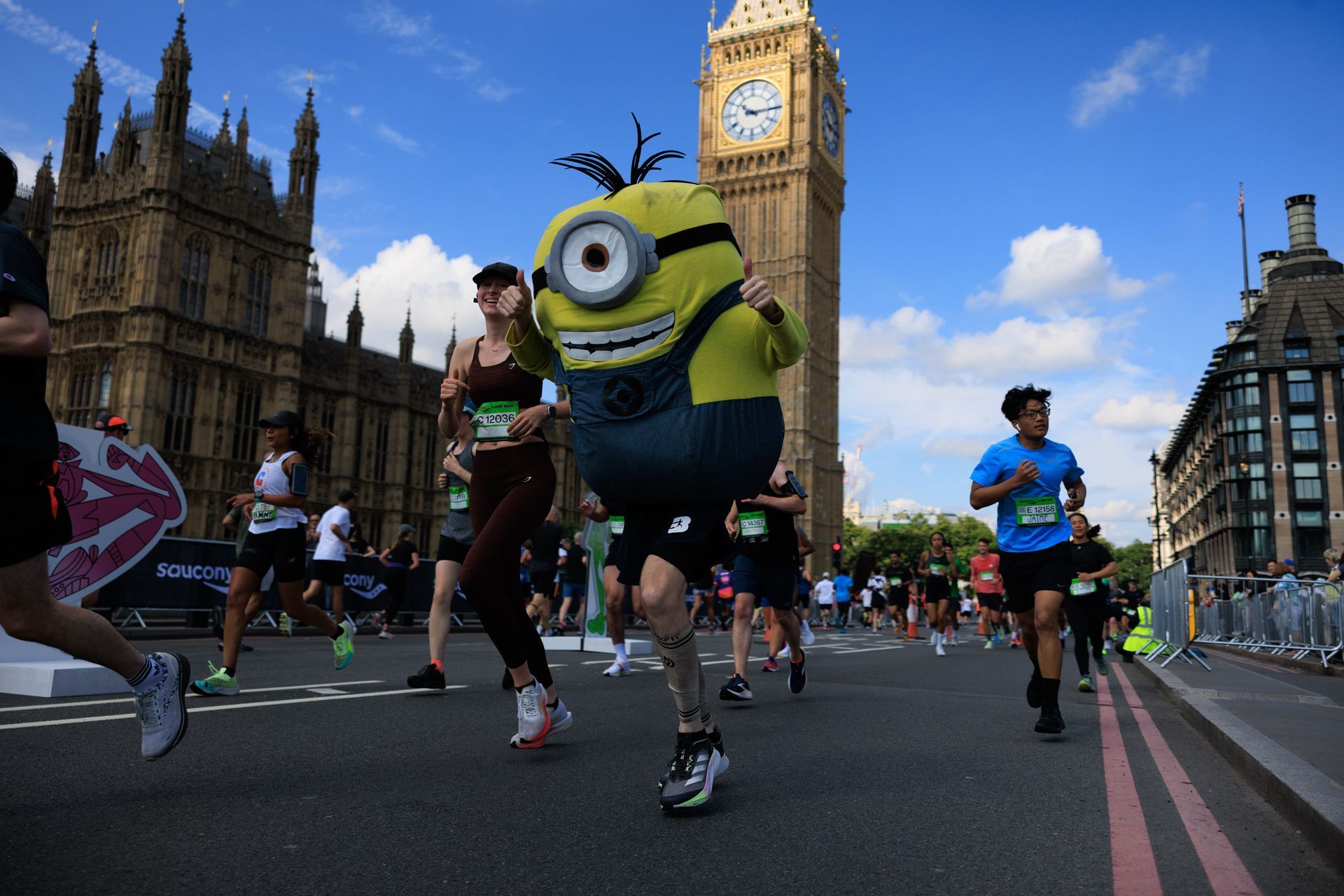Blog

by Nicholas Rewcastle
•
8 April 2025
9 April marks four years of New Reach. It’s been a remarkable journey so far, with much more to come. Our MD and Founder, Nick Rewcastle, reflects on the milestone. If you said to me four years ago, that I would be writing this post, I may not have believed you. When we set out, we had a clear mission; to make a difference in the development of sports, talent, and communities through ethical, impactful, and strategic communications. We promised to never compromise trust, morals or rules to profit. I can proudly say that we’ve stuck by our principles and delivered some amazing results along the way. What began as a small idea has grown into a team of dedicated PR, social media and video professionals, united by a shared set of values. We’ve had the honour of collaborating with a diverse range of clients, playing a role in telling the stories that matter the most. There’s too many highlights and amazing projects to name them all, and we don’t want to miss anyone out. Just looking at some of the sports we have worked with, the variety is incredible; football, rugby, cricket, squash, bowls, climbing, rowing, table tennis, triathlon, running, basketball, gymnastics, sailing and even chess. The past two years has seen us really drive growth across our digital offerings, growing our expertise across social media management and video, aligned with our ongoing PR work. None of this would be possible without the incredible people I get to work with. Our team is small but mighty, and every single person brings passion, skill, and care to the table. Together, we've built something that feels authentic — something I’m genuinely proud of. As we celebrate this milestone, we also look forward to the next four years. We remain committed to our mission and are extremely excited about the future. We want to further grow the team, work with new clients, experiencing new sports and sectors. We extend our heartfelt thanks to our clients, partners, and the communities we've worked with over the past four years. Your trust and collaboration have been vital to our journey. Here's to continued growth, meaningful impact, and many more milestones ahead.
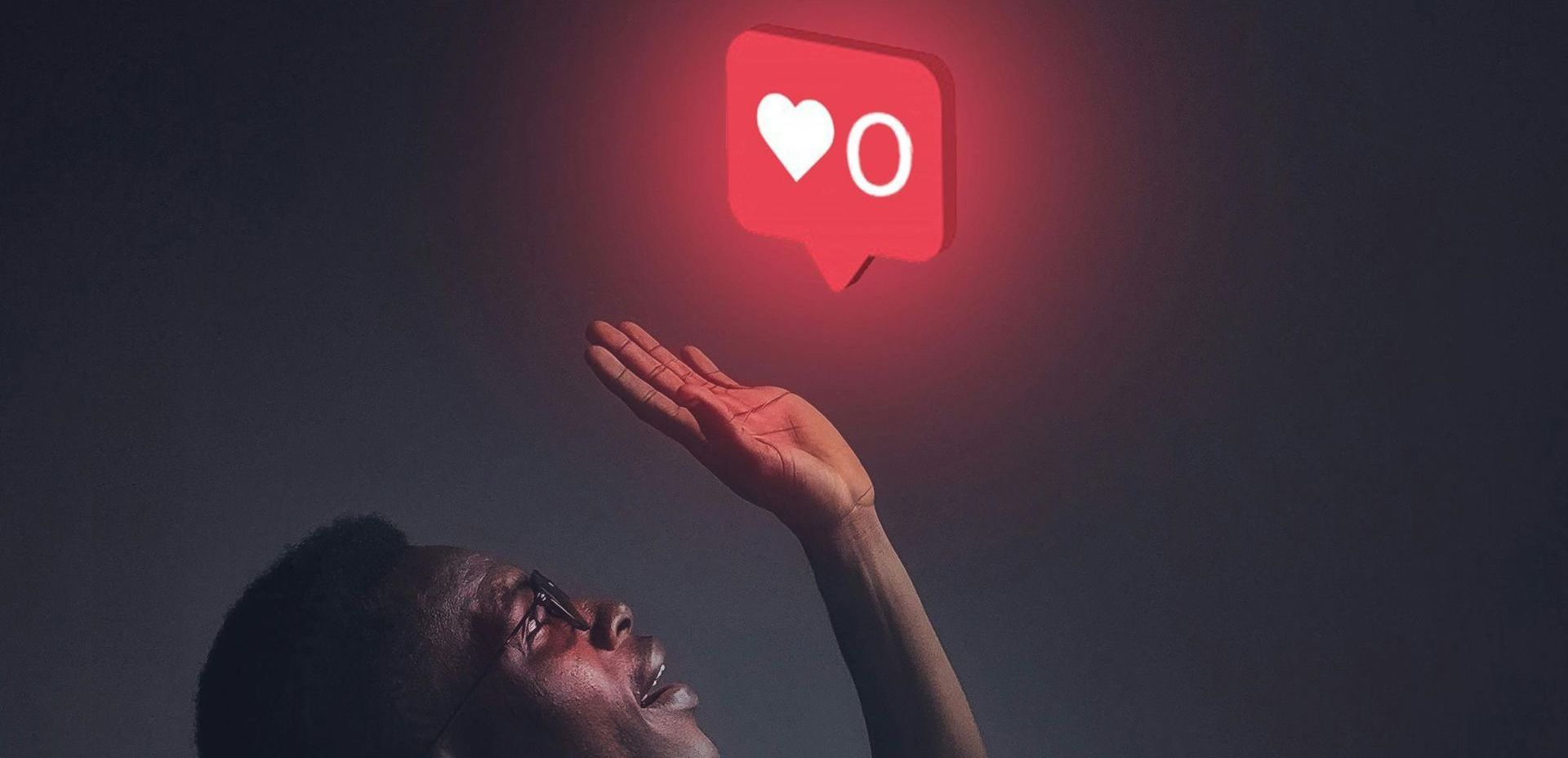
9 January 2025
Will Lloyd, Communications Executive One of the more valuable traits in social media management is adaptability. Rarely does everything work out exactly according to plan, so the ability to step back and consider why your plan didn't work, adjusting accordingly, is often the difference between a successful campaign that resonates with your audience and one that goes largely unnoticed. When creating content plans for a new client or platform, we are often making an informed guess, whilst trying to demonstrate what we can do ‘in theory’. You’ve done the research and crafted a strategy that seems promising, but until the posts go live, there’s no guarantee of how things will play out. This is when we start to look at tweaking posting times, being more graphic/video/image led or even scrapping certain aspects completely. That’s because social media doesn’t work the same way for any two accounts, and what performs well for one client or audience might struggle elsewhere. While it’s frustrating, this is what makes us good at our job - the ability to adapt to the needs of the account. Social media rewards those who can step back, assess what isn’t working, and try something new. It can feel messy and unpredictable at times, but like any creative industry, trial and error is how you uncover what really works. Lindsey Buckingham and Stevie Nicks’ original project struggled horribly before they *adapted* and joined Fleetwood Mac; now look at them - or at least their music… It’s worth remembering that content plans aren’t set in stone. They’re a starting point and a vague concept, not a rigid programme. It might feel wrong to abandon a plan that you worked hard to come up with, but the best results often come when you allow yourself to be more creative and impulsive with your content. If a series doesn’t gain the engagement you hoped for, you haven’t wasted your time. Treat them as experiments, and each time one doesn’t work, check it off the list and move on to the next idea. Eventually, you will find the trends and nuances that get people engaged - put yourself in the shoes of your audience, what would you like to see in your feed? It’s all part of the process, and more often than not, your ability to adapt will be rewarded. Clients and audiences will appreciate content that feels fresh, creative and tailored to them.

by Nicholas Rewcastle
•
19 December 2024
It’s been another outstanding year for New Reach. It’s been a busy one for the team, and we want to take a moment to thank everyone we have worked with in the past year for placing their faith in New Reach as we continue our expansion. 2025 looks set to be another great year, as we continue to grow across all three of our divisions – PR | Social | Video. Here’s a breakdown of 2024: January Captured social and video content at the World Boxing Cup in Sheffield Started working with Greenhouse Sports Announced Hampshire’s ground naming rights partnership - Utilita Bowl February Started working with Active Sussex March Attended NJIRC, capturing video content April Headed to Madrid to lead the UK media for the Laureus World Sports Awards Launched LYR’s newest programme, Active Row Bristol Managed media for the Rugby Black List Awards May Led the PR at the Hackney Half marathon Sam promoted to Senior Comms Executive June Led the PR at the Blenheim Palace Triathlon Sam got engaged! July Led the PR at the Saucony London 10k Headed to Leeds to film with GB Climbing stars ahead of the Olympics Will promoted to Comms Executive August Toby Roberts won Olympic gold – a huge moment for GB Climbing September Managed the media activity for Utilita Bowl’s historic solar switch on Led PR for Greenhouse Sports’ partnership launch event with VitaCoco and Zharnel Hughes October Led the PR for Global Chess League in London Media management at Oxford Half Supported World Rugby for RWC25 and WXV Company directors, Nick and Hannah, welcomed baby #3 November Headed back to Sheffield for another World Boxing Cup December Started work on the 2025 Laureus World Sports Awards Helped England Squash with celebrating their annual Awards winners Partnered with performance marketing firm, Double Media See you in 2025!

by Nicholas Rewcastle
•
11 December 2024
We’ve proudly partnered with performance marketing agency, Double Media, to provide a wider offering to our clients. Double Media specialises in all things paid advertising across channels such as Meta and Google and lead nurturing systems such as text automations and email automations. The partnership aims to combine New Reach’s integrated communications offering and skillsets with Double Media’s performance marketing services. You can find out more about Double Media at: www.double-media.com Collaboration has always been at the heart of New Reach, with MD and Founder Nick Rewcastle creating strategic partnerships with varying organisations and talented individuals over the years. New Reach Managing Director, Nick Rewcastle, said: “It’s a very exciting partnership for us, working with the guys at Double Media to offer something fresh and different. We’ve also been very impressed with their progress and development over the last few years. “While we would love to say that we can do everything ourselves, we can’t, which is why we love combining with brilliant partners. Ryan and I met through a mutual connection and got on like a house on fire, so I knew this was the start of something great. “What is also so refreshing is that Ryan and I agreed that we are both local business owners, doing great things, that can help each other out – because we want to. There’s no formal relationship or expectations, simply the ability to collaborate when we can. “Simply put, Double Media have skills that we don’t, but know that some of our clients would love. Likewise, we can offer our PR services to Ryan’s clients – all with the peace of mind knowing that we vouch for each other.”
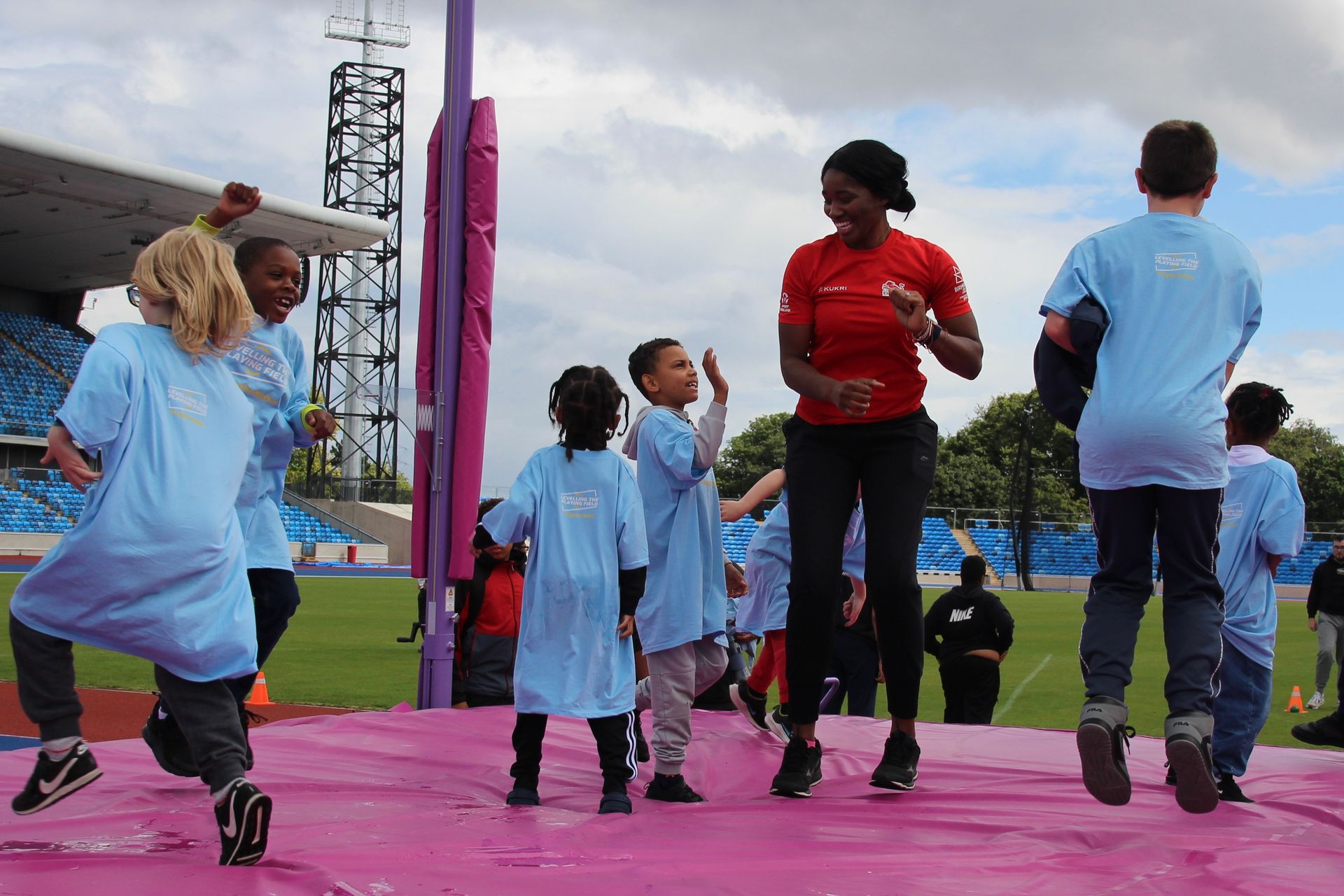
by Nicholas Rewcastle
•
9 December 2024
Last week, Sport England released its annual Active Lives Children and Young People survey – a fundamental date in the diary for all operating in this sector. Yet again, concerning data has highlighted the sustained battle to get young people active. 52% of children and young people are doing less than the recommended amount of activity a day. Boys are still more active than girls with affluence and race a key factor. The worrying consistency of these annual reports is the rise in health inequalities. Those from a white or mixed background are more likely to be active than Black or Asian children, a trend that has continued over the years, worsening since the COVID-19 pandemic. The pandemic exacerbated the inequalities - with least affluent, Asian people, disabled people, and people with long-term health conditions all less likely to be active than other groups. But surely, we expected more progress by now? A small glimmer of hope, however, is that the general situation generally isn’t getting worse, with overall activity levels around the same as the previous year, but we’re still not back to pre-pandemic levels. We can’t celebrate ‘not getting worse’, however, and the inequality crisis remains alarming. There are significant learnings this year around motivations to being active, finding that those with three or more positive attitudes towards physical activity were more active. However, among the disparities are younger children being less active, with many having a knock-on effect from the pandemic. Sport England chief executive, Tim Hollingsworth, said: “For the pandemic generation, COVID-19 has had a fundamental impact. The data shows that, for the children whose impressionable early years were defined by lockdowns and lack of activities, attitudes towards sport and physical activity are distinctly negative. “The challenge is huge - with issues such as rising obesity levels and rising cost-of-living damaging children’s health prospects too – but so is the opportunity. An active generation is critical to the government’s missions because active children turn into active adults, helping our NHS and improving the long-term health and wealth of our country. “Sport England will continue to play its part in solving these challenges, but we cannot do it alone. We look forward to working with the government and everyone who cares about future generations to drive the changes we need.” The full report is available here .

by Nicholas Rewcastle
•
4 March 2024
If you are currently studying in a PR / journalism or comms-related course, or have recently completed your studies, then we would be delighted to discuss a work experience opportunity. We're passionate about providing opportunity to those looking to kick-start their careers in this world. Ultimately, we believe that hands-on experience is priceless on a CV. Remember to really look at what we do and make sure that we are the right fit for you, and your career aspirations. Location: Newhaven, East Sussex (you will learn more from being in the office) Duration: TBA - long or short, happy to discuss (min 4x weeks recommended) When: Immediate What: Media relations, social media management, graphic design, video editing, copywriting To apply, send an email to hello@newreach.uk to tell us about yourself and why you want to join team New Reach.

by Nicholas Rewcastle
•
17 January 2024
Sport for development charity Greenhouse Sports has appointed New Reach PR to drive positive media profile in 2024. The East Sussex-based communications agency will be working closely with the charity over the next year to support its new strategy, following the launch of ‘Greenhouse 2.0+ - The Way Forward’. Greenhouse Sports is a charity that uses sports coaching and mentoring to empower young people who are facing disadvantage and help them to unlock their full potential. Operating in London for more than 20 years, and now with recently established programmes in Portsmouth and Leicester, Greenhouse Sports works with around 8,000 youngsters every year in over 70 coaching programmes across basketball, table tennis, volleyball, tennis and cricket. Sport and social impact communications agency New Reach specialises in delivering impact through PR, social media and video and has been brought in by Greenhouse Sports to deliver traditional PR and media relations support to reach and engage new and existing stakeholders with the charity’s new vision and mission. Greenhouse Sports’ Head of Communications, Ben Wyatt, said: “We are delighted to have Nick and New Reach joining our ‘Team for Life’ to support our urgent need and ambitious goals to reach a wider and influential audience and affect real change for the young people and communities Greenhouse Sports coaches support. The rising tide of poverty in the UK is increasing the mental, physical and emotional burden on the young people’s development. Pressures that our coaches work to alleviate day in and day out. “New Reach have expertise and a proven track record in delivering extensive media engagement and landing the narratives and storylines to evidence how sport and the kind of work Greenhouse Sports does has a lasting and transformational effect on young people, their families and society as a whole.” New Reach has a track record of working with charities in the sport for good sector, including the likes of London Youth Rowing, Laureus Sport for Good Foundation, Restart Rugby, London Sport, Hampshire Cricket Foundation and more, delivering powerful media coverage, social media and video content. Nick Rewcastle, Managing Director and Founder at New Reach added: “The work being done by Greenhouse is transforming lives in some of the poorest communities in the country. Greenhouse’s impact in London over the last two decades is now being expanded and made available to other communities, and storytelling is a vital part of this journey. “We know the powerful role that strategic comms can play in this space, driving further opportunity for growth. We are extremely passionate about the work being done by Greenhouse and can’t wait to become a part of the team.”
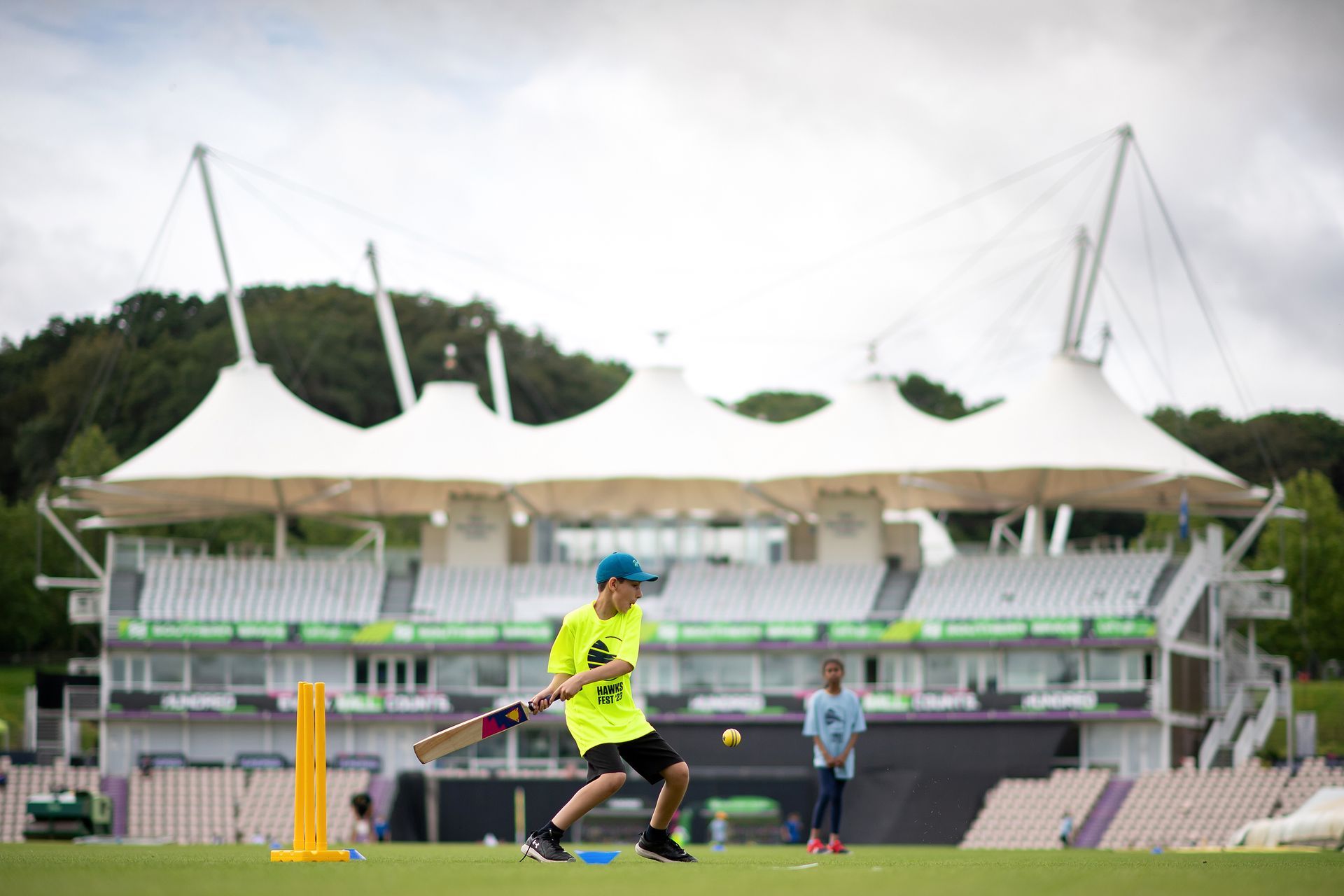
by Nicholas Rewcastle
•
7 December 2023
After a successful first year of engagement, The Ageas Bowl has retained the services of New Reach PR for another 12 months. New Reach entered an initial year-long agreement at the end of 2022 with The Ageas Bowl to support with driving powerful media coverage, the development of the venue and club’s communications strategy, working closely with the existing team. Sport and social impact communications agency New Reach will now focus in 2024 on driving continued media coverage across national and regional media outlets, delivering important key messaging for the venue, Hampshire Cricket, Southern Vipers and the club’s community departments. In the first year of engagement New Reach generated nearly 1,000 pieces of important media coverage across cricket, commercial, community and venue related activities. Greig Stewart, Head of Customer Experience at The Ageas Bowl, said: “New Reach are fantastic storytellers and have brought a new energy and focus to our comms plan and content creation. A great group of people to work with, they have created positive relationships across the Club and their positive attitude to relationship building is evident in the highly engaged network of writers and broadcasters they have given us access to. “Over the 12-months we have been working with Nick and the team our local and national reach has significantly increased across broadcast and written press.” Nick Rewcastle, Managing Director and Founder at New Reach added: “Being originally from Hampshire myself, the chance to work with The Ageas Bowl was hugely exciting and over the last year that excitement grew as we uncovered the incredible work being done at all levels within the business. “At New Reach, we work with businesses that care and provide powerful impact in their operations, so working with the right partners like The Ageas Bowl is perfect for us. We look forward to another busy year working in cricket.” Photo credit: Dave Vokes

by Nicholas Rewcastle
•
6 December 2023
New Reach Managing Director, Nick Rewcastle, formerly worked in professional rugby before founding the agency. In the wake of rugby’s ongoing mental health emergency, Nick has penned his thoughts. Sport is in a crisis, and I’m not entirely sure it recognises it. Why? Because this crisis has been in existence for years. One of the worst-hit sports is rugby. It’s in a mental health crisis, and it’s sadly no surprise. In the wake of the financial disaster the sport has experienced, the emerging ongoing challenges people are faced with around head injuries, busy playing schedules, social media and elite sporting pressures, it’s a tough time to be involved in the game. England captain Owen Farrell has bravely taken the decision to step-aside for the time being from playing international rugby, and subsequently choosing to miss the 2024 Six Nations. If the team’s captain is in a position where he has no choice but to do so, how can more not follow? A sentiment shared by Bristol and England prop Kyle Sinckler who believes that more players will follow in Farrell’s footsteps in an attempt to protect their mental health. But is the state of the game the sole reason for players, past and present, needing to manage their mental health? Absolutely not. This abhorrent abuse on social media needs to stop. We need more regulation online. Farrell cited the abuse online as a core factor in his decision, alongside media coverage. Even the treatment towards referees online has forced the likes of Wayne Barnes and fellow colleagues out of the game. It’s not worth the abuse and threats – nothing is. Unfortunately, sport is hard, and being a sportsperson is hard. So, more support is needed. And whilst the game is getting there, it’s not where it needs to be. We’ve been working with the wonderful Restart , the official charity of the Rugby Players Association, and the work they do is phenomenal in providing mental health support to players, past and present. But they can’t do it alone, more work is needed from the unions and clubs to look after players. And more funding! More players need to be advocating for mental health, like we have seen with Farrell, Sinckler and the likes of James Haskell and Joe Marler over the years. Mental health need not be taboo anymore in rugby, or sport as a whole. In the last couple of years, four teams have vanished from the top two flights of domestic rugby in England. Over 200 players have had their worlds turned upside down with devastating diagnoses of brain injuries as a result of playing the game they love. Rugby is in an existential crisis which has been building for over a decade now. Support those trying to help the ones that need it the most. Come on rugby, protect your people.

by Nicholas Rewcastle
•
6 July 2023
Nick Rewcastle, managing director of New Reach PR, outlines in SportsPro how the FIA’s attempts to ban drivers from making political statements will have a devastating impact for the sport. After considerable progress in very recent years, athletes have finally been given platforms to have a voice, discuss vital social and humanitarian issues and raise awareness for causes close to them. After decades of resistance, and finally breakthrough, it would be disastrous for the walls to be rebuilt and athletes to be silenced. Could the International Automobile Federation (FIA) be waving the red flag on its own sport, following in the footsteps on Fifa, soccer’s governing body, during the recent World Cup? The FIA, the governing body for Formula One, is due to issue further guidelines to clarify the meaning of its new rule banning drivers from making political statements. In recent weeks, we have seen the likes of Lando Norris, George Russell and Sir Lewis Hamilton speak out against the FIA’s rule. Seven-time world champion Hamilton is arguably one of the highest-profile and most successful sporting names to regularly drive purpose-led conversation across topics ranging from human rights to lifestyle choices. The British driver’s Instagram bio doesn’t state his success on the track, instead reading: ‘🌱 based. Living my purpose. Empowering those who may not realise their greatness. Equal rights for all. Love is love.’ The impact that Hamilton has had alone will not only have supported millions of people in hearing such a high-profile name address issues that resonate with them, but it also will have helped increase the commercial value of the sport through purpose-led brand advocacy. The power of the athlete voice is second to none, delivering emotional and commercial value across the world. Some racing commentators believe that Hamilton’s activism has been the catalyst for the FIA’s decision, which was implemented earlier this year. The rule forbids ‘the general making and display of political, religious and personal statements or comments in violation of the general principle of neutrality promoted by the FIA under its statutes, unless previously approved in writing.’ As expected, human rights groups are up in arms, and have been over recent weeks, but only now are we hearing directly from those directly impacted: the drivers. The FIA will no doubt have its reasons, likely citing commercial constraints and the stability of the sport. But the political landscape of the FIA, with the controversial Mohammed Ben Sulayem as its president, raises alarm bells. Whilst Ben Sulayem earlier this month announced that he would be taking a step back from direct involvement in Formula One, his tenure in the role has so far damaged the integrity of the sport. His string of controversial decisions are accentuated by the lack of support from the Formula One itself, which is committed to providing a platform to raise awareness of issues around diversity and human rights. Formula One chief executive Stefano Domenicali has come out to say that the series would “never gag drivers”. Despite the two bodies sharing the responsibility of running the hugely popular and commercial sport, unity appears to be some way off. This breakdown has the power to devastate the sport. Without free speech for drivers, the sport will lose its talent who will perhaps seek new opportunities elsewhere in motorsport, which is seeing substantial growth as a whole. Without advocacy and purpose, many fans, groups and ultimately commercial partners will drop off. It’s not a world where voices can be silenced anymore – Fifa saw that last year, and the FIA is heading down a potentially destructive route. What is reassuring to see is the harmony amongst drivers, teams and Formula One, who now seek answers from the FIA into what the “confusing” ruling actually means for them.

by Nicholas Rewcastle
•
6 July 2023
Sport and social impact communications agency New Reach PR has been appointed by LimeLight Sports Club to support with driving publicity for six of its annual events. New Reach PR will be generating positive profile through earned media coverage and driving the narrative across the following events: • Hackney Half • Blenheim Palace Triathlon • ASICS London 10k • London Triathlon • London Duathlon • Oxford Half The agency, founded in 2021, has risen in prominence over the last two years and is becoming recognised as a world-leading communications agency specialising in telling powerful stories of sport and purpose. New Reach PR has worked with the likes of Laureus, EFL, BPA, England Squash, London Sport, Commonwealth Games England and many more. Commenting on the announcement, Managing Director of New Reach PR, Nick Rewcastle said: “LimeLight Sports Club is a brand with important values and is trying to redefine mass participation events across the country. These events represent communities and are looking to provide an inclusive, diverse and accessible approach to unite and promote health and mental wellbeing through these powerful sporting events. This is why we are confident that working with LimeLight Sports Club matches with our values and we are extremely excited to be joining them for this year.”
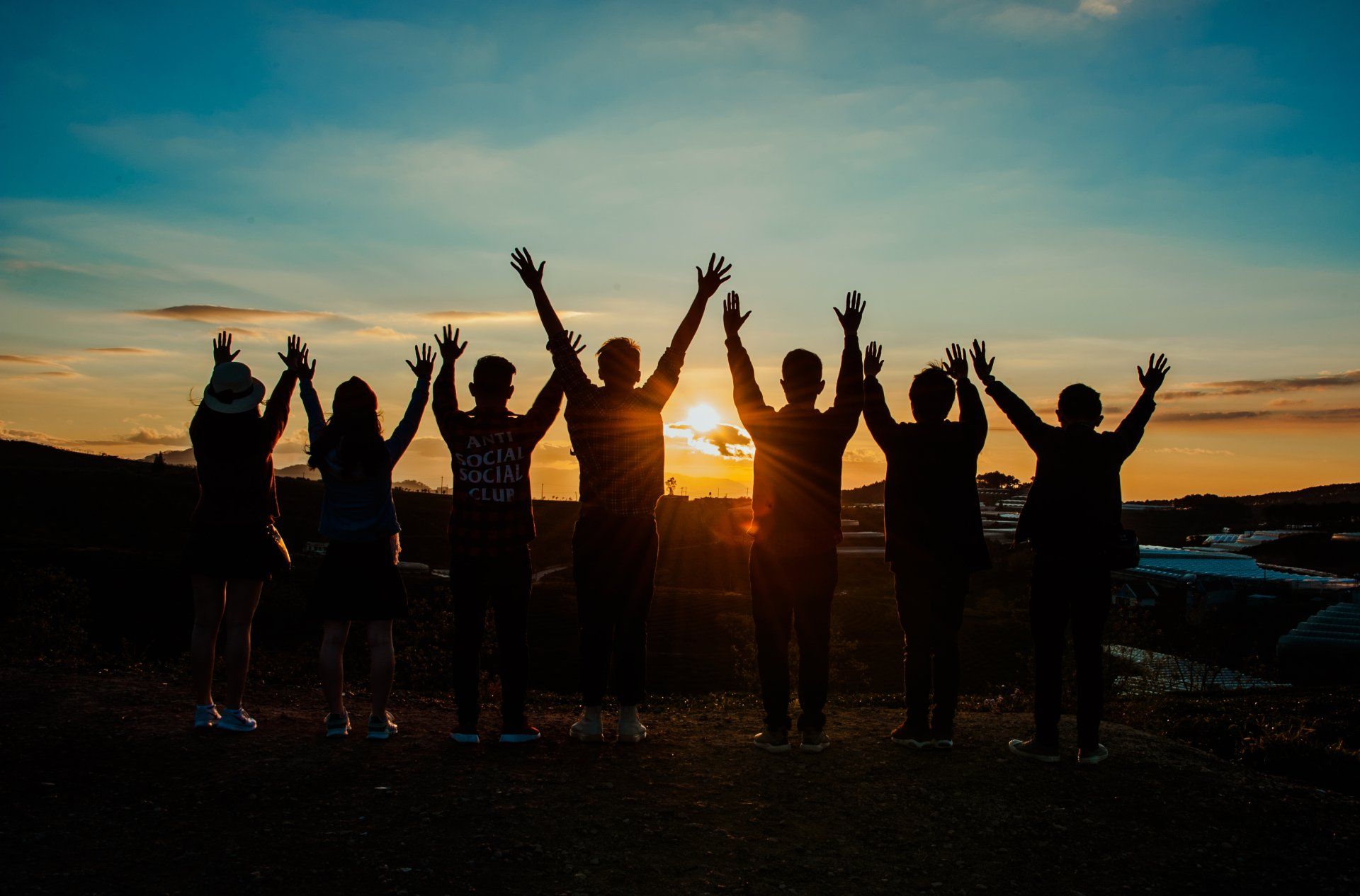
16 December 2022
2022 proved to be the ‘bounce-back’ year for sport following the pandemic, and even grew on 2021 – the year that we dubbed as being the ‘Year of Purpose’. With the highs of record-breaking crowds and viewership and the lows of political controversy, this year in sport will go down in history as one of the most memorable. We’ve shared 10 key moments that helped to define sport in 2022. 1. The Lionesses roar In May, shortly after we launched our Purpose of Your Sport campaign, we examined women’s sport. We mentioned sold-out crowds at Camp Nou and the poignant sponsorships and broadcasting deals set to help with increasing visibility, participation and growth. And while we had seen an impressive amount of growth then, no one could have foreseen what would happen to women’s sport over the summer. I am sure we are all in agreeance that the Lionesses are firm favourites to take the team gong at SPOTY this year, marking the highlight of sport in 2022, but it respresents so much more than a great moment on the pitch – the impact off the grass was dynamic. Over a quarter of those that watched the Euros final went on to watch more women’s sport whilst other sports also benefited with 46% of those new viewers going on to watch cricket as well as football. Also, average attendances in the Women's Super League have increased by 200% after England's triumph at Euro 2022. 2. Red Roses suffer heartbreak, but bring us hope The growth of women’s sport has not just been exclusive to football. The Women’s Rugby Union World Cup saw 42,000 people at Eden Park 1.7 million people tuning into ITV to watch the final despite its 6:30 am start time. Robert Kitson’s article in The Guardian highlighted the position women’s rugby is in right now with the prospect of having a sold-out Twickenham in 2025 a real possibility. According to the article, around 70% of fans in New Zealand were new, suggesting that the game is seeing genuine growth. Of course, it was heartbreak for the Red Roses, narrowly losing out in the final, but what the tournament has done for the sport globally is monumental. 3. Inclusivity wins The Rugby League World Cup had both men, women and wheelchair tournaments happening simultaneously, witnessing a huge influx of crowds and visibility. Having all three tournaments at the same time meant that both the Women’s and Wheelchair tournaments were able to get similar attention to the Men’s. A key theme for this year has been around focusing on growth in diversity and inclusion across sport. There’s no doubting that the Rugby League World Cup ticked those boxes through its record-breaking tournament, delivering on its promise to be the biggest, best and most inclusive in the sport’s history. Some of the highlights include: Every minute of every match from all three tournaments was broadcast live by the BBC with a cumulative match average audience of 29.24 million people tuning in domestically across network and digital channels. The Wheelchair final between England and France, was watched by a combined peak audience of 1.3 million people, with a world record crowd of more than 4,500 40% of the TV audience share was female, while 37% of the overall viewers were under the age 55. Encouragingly 46% of the viewership was based south of the Midlands, outside of the traditional rugby league heartlands The women’s final between Australia and New Zealand was watched by nearly a million viewers in the UK 4. The changing of the tennis guard Tennis experienced a monumental year. Both Serena Williams and Roger Federer decided that this year would be their last on court. While change at the top of the sport has allowed newcomers to shine, we also witnessed continued criticism of Emma Raducanu as people focused more on her brand deals rather than her tennis playing. Tennis has widely been seen as a relatively privileged sport that has created accessibility issues. Through our own blog here at New Reach , we highlighted the significance of affordable facilities. Furthermore, The Independent has reported that Amazon Prime will be reinvesting some of its earnings from Emma Raducanu’s US Open final, into grassroots tennis for young girls. Only time will tell how much of an impact this will have on the growth of the game. 5. It’s a Brum-ting How could we not include the 2022 Birmingham Commonwealth Games? Simultaneously, landing on the same year as London 2012’s 10-year anniversary, the legacy of multi-sport tournaments was a big theme of the year. Birmingham hosted a show-stopping event, rooted in the goal of building a legacy for the city and has invested considerably into its legacy programme. However, while these Commonwealth Games were widely deemed a success in the short term, whether this success continues, is what so many tournaments have struggled to produce. As for London 2012, despite its ‘inspire a generation’ catchphrase, the city has not seen significant improvement in participation in sport. Without this improvement, we must continue to question the positive community of multi-sport tournaments and hold them accountable for their unfulfilled legacies. 6. The Q word From one major tournament to another, the sporting year has come to an end with a unique winter FIFA World Cup. Talking about the legacy of this tournament, it is likely to go down as one of the most controversial sporting events in history. From human rights violations, including the treatment of migrant workers and the anti-LGBTQ+ laws in the host nation Qatar, this tournament has highlighted one thing in particular – that sport and politics can never truly be separate. Even if you are FIFA and want it to be. For many, the combination of sport and politics may be difficult, but it has to be said that tournaments like this have great power in influencing important values to the masses. When talking about the purpose of sport, we must also talk about the politics of sport. To look more into this, take a look at our MD’s piece in SportsPro, analysing the ‘FIFA-Crisis’. 7. The Winter Olympics and Paralympics Beijing 2022 kicked off the year of human rights controversy in sport and piled huge pressure on the IOC. Human rights, commercial worries and diplomatic boycotts dominated, while there were also climate change concerns with events made completely from manufactured snow. However, the event saw a televised and digital audience of over two billion, highlighting a continued appetite for Olympic broadcast coverage in an increasingly fragmented media landscape, with more hours of coverage available than at any other edition of the Winter games. Could this increased appetite also be centred around the increase coverage as a result of the controversy, or is the love of winter sport just on the rise? 8. The year of Sportswashing The term sportswashing seems to be the big word for 2022 … so much so that it has also been used in the list of Collins Words of the Year. Sportswashing refers to organisations which use sporting activities to enhance or rehabilitate their image. The term involves using major sporting competitions to shade or distract from unacceptable policies or human rights abuses. Sportswashing has recently been a key topic for media discussion with news that complaints have been lodged in five countries against FIFA’s branding of the Qatar World cup as carbon-neutral. Global football stars and sporting organisations have demanded that FIFA ditch its 'carbon neutral' claim and replace its current plans with a more responsible approach that prioritises reducing emissions. While big sport gains big money from authoritarian regimes wanting to buy into the soft power of sport, the issue is being moved further up the agenda by activists, including the athletes themselves. So, human rights activists and other critics are coining this term for these moves by deep-pocketed regimes to launder their reputations by sponsoring major sporting events or entities with global appeal – for the good of their business, as opposed to for genuine good. For the laundromats involved, the practice is without doubt good for business, bringing in once unimaginable windfalls. Formula One’s 10-year deal with Saudi Arabia is reportedly worth $650 million. FIFA was roundly denounced when it awarded this year’s World Cup to Qatar back in 2010, but the petrostate is reportedly spending hundreds of billions of dollars on the tournament and it has become a generous all-purpose benefactor of the sport’s governing body. While sportswashing calls out the practice of using sport to cover up abuse such as the 1936 Berlin Olympic Games, which became part of Nazi propaganda, it seems rifer than ever. Will 2023 bring in better policing and governance to come down hard on sportswashing, greenwashing and any other types of ‘dirty laundry’ in sport? 9. Russia and Sport Russia was banished from international sport following its invasion of Ukraine. The nation was already suffering reputational damage and sporting limitation as a result of its long-standing systemic history with doping allegations, but this year saw Russia isolated from nearly every sporting event as humanitarian issues took over. Sport has always been of great national pride to Russia, but the future of its role in global sport is well and truly in doubt, as Russia’s political actions play a role in its sporting demise. How will the world of sport continue to respond to Russia in 2022 and beyond? It’s integral that politics and humanity take precedent. Sport has a role to play in supporting Ukraine, as we have seen in so many instances, bringing positive impact to those that need it the most and using its platform to unite and support. 10. The 2022 Laureus Sport For Good Index We round up this year’s list with a list, of sorts. New Reach PR was honoured to again support Laureus with the 2022 Laureus Sport For Good Index, a global list of the brands which use sport to tackle key challenges within society and the environment. The 2022 Index includes global giants Nike, Visa, Microsoft and Google. Also making the list are EA Sports, Patagonia, Lego and Nissan, along with niche brands Hylo Athletics and sunglasses manufacturer SunGod. While measures continue to be taken by brands to decrease their emissions and shrink their ecological footprint dominated the inaugural 2021 Index, this year’s edition demonstrated a vast increase in brands treating each element of the triple bottom line equitably. The full 2022 Laureus Sport For Good Index is available here.
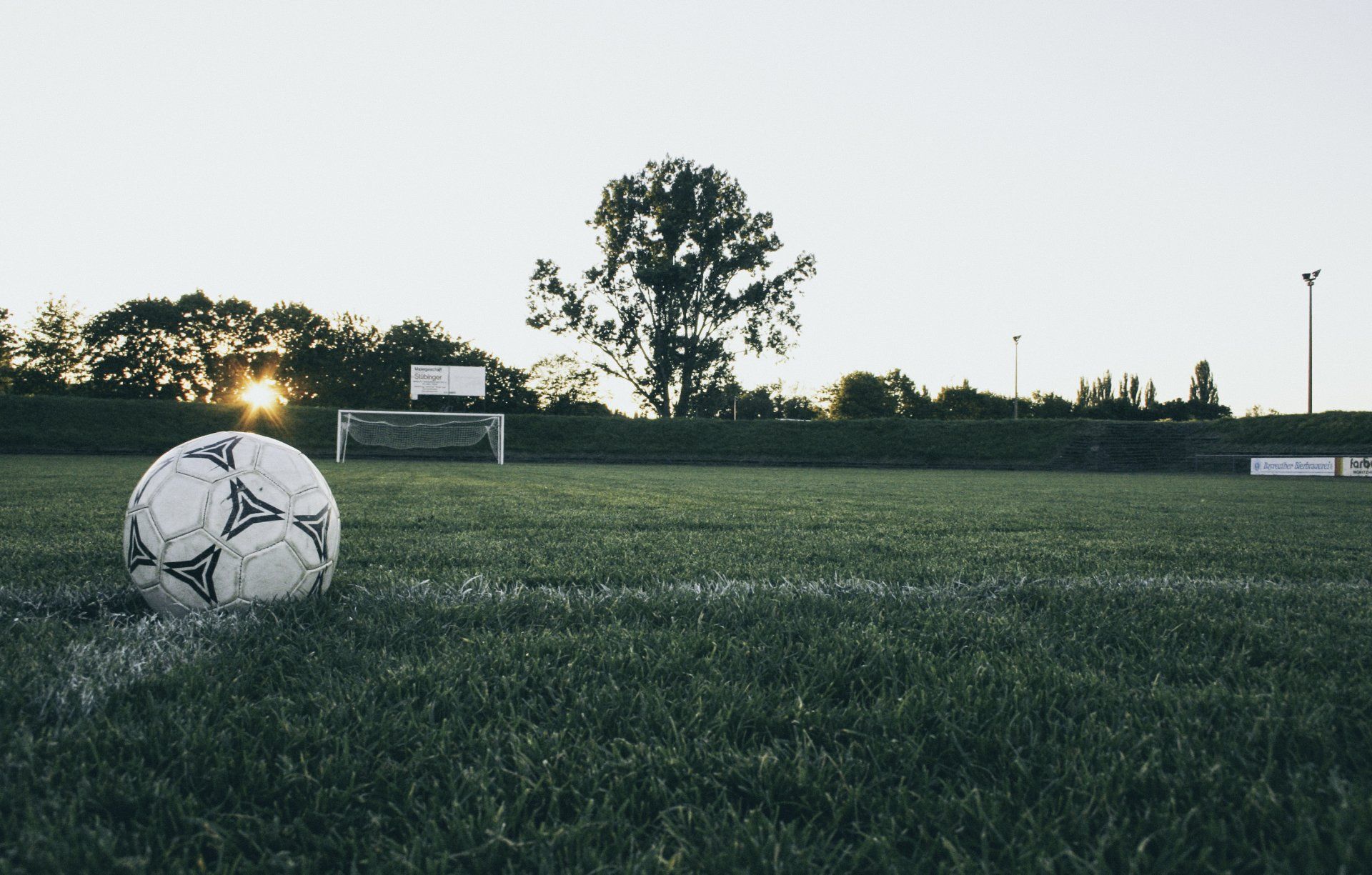
2 November 2022
Football has been the world's largest sport for centuries. With roughly five billion fans worldwide according to FIFA, its popularity is unrivalled. It also remains one of the most accessible at grassroots level, with an array of sessions, groups and clubs available, and all you need is a ball and some green space to have a ‘kick-about’. There are an incredible 18,500 clubs in England and 11 million players . In turn, the sport’s accessibility has provided some of the biggest names in the world. Cristiano Ronaldo, who was originally from a modest neighbourhood in Funchal, Portugal, recently came out top of the list on SportsPro’s 50 Most Marketable athletes in the world in 2022, joined by 16 fellow footballers on the list, highlighting the sport’s dominance. With this level of profile, it has provided these footballing sensations with the platform to raise awareness for, and discuss, important social and humanitarian issues. Ronaldo, for example, famously removed the Coca-Cola from the press conference desk to promote water and healthier lifestyles. Ronaldo’s Manchester United teammate Marcus Rashford is one footballer that exemplifies what it means to use your social influence for good. His work during the pandemic providing children with free school meals shows how we are seeing the sport use its high profile to provide for others. As well as role models in the men’s game, we are also now seeing women’s stars emerging. The success of the Lionesses in the recent European Championships has significantly increased the profile of England women’s stars and the lionesses have transformed what success within women's sports looks like. The Euros final was the largest crowd ever seen for the tournament with an incredible 87,192 people watching. Not only was England’s win one for the sporting history books, but it is now driving meaningful and long-term change within women’s football, and sport as a whole. We are now seeing record attendances being set for Women’s Super League Games and the Lionesses are in a position to speak out on issues that matter most to them, for example, their plea to the Government to enable all girls access to football at school. We are finally seeing more dedicated women’s sport reporters in the national media, and more space in the papers are opening up. Huge transfers including England’s Keira Walsh’s £400,000 transfe r to Barcelona is vastly symbolic of the value teams are putting on female players. We are seeing more in-depth and beneficial conversations around the realities of competing as a woman such as teams changing their kits, so players no longer have to wear white shorts. From one major tournament to another, as this winter we will see the much-anticipated men’s FIFA World Cup take place in Qatar. To say the least, the tournament has faced a lot of criticism. The controversy stems from much more than the winter break required in the UK and the time of year, instead rightly focusing on fundamentally worrying human rights elements surrounding the nation and tournament. There have been shocking accusations of horrendous working conditions for migrant workers who built all the brand new facilities. An article from The Guardian revealed that 6,500 migrant workers have died in the country since being named the hosts. In a country where homosexuality is illegal, LGBTQ+ groups have been outspoken about the human rights violations that this world cup is presenting. As a result, many of the teams competing have started wearing One Love armbands as a subtle form of protest. England, Wales, France, Germany, Belgium, The Netherlands, Denmark, and Switzerland’s captains will all be wearing the armbands as a sign of solidarity. While it is highly unlikely that this act will result in any positive action to reduce the harsh laws in Qatar, but it may encourage further conversation around homophobia in football, at the very least. Football is, and will remain for the foreseeable, the leading global sport – at all levels. Why? Investment seems the obvious, with global sponsorships generating billions of pounds each year and the increased grassroots development opportunities being recognised and acted upon as the game grows on the main stage. It’s not without its controversies and corruption, sadly, and this all needs stamping out, but it’s important to recognise the power the sport now has to promote important causes and have a voice.
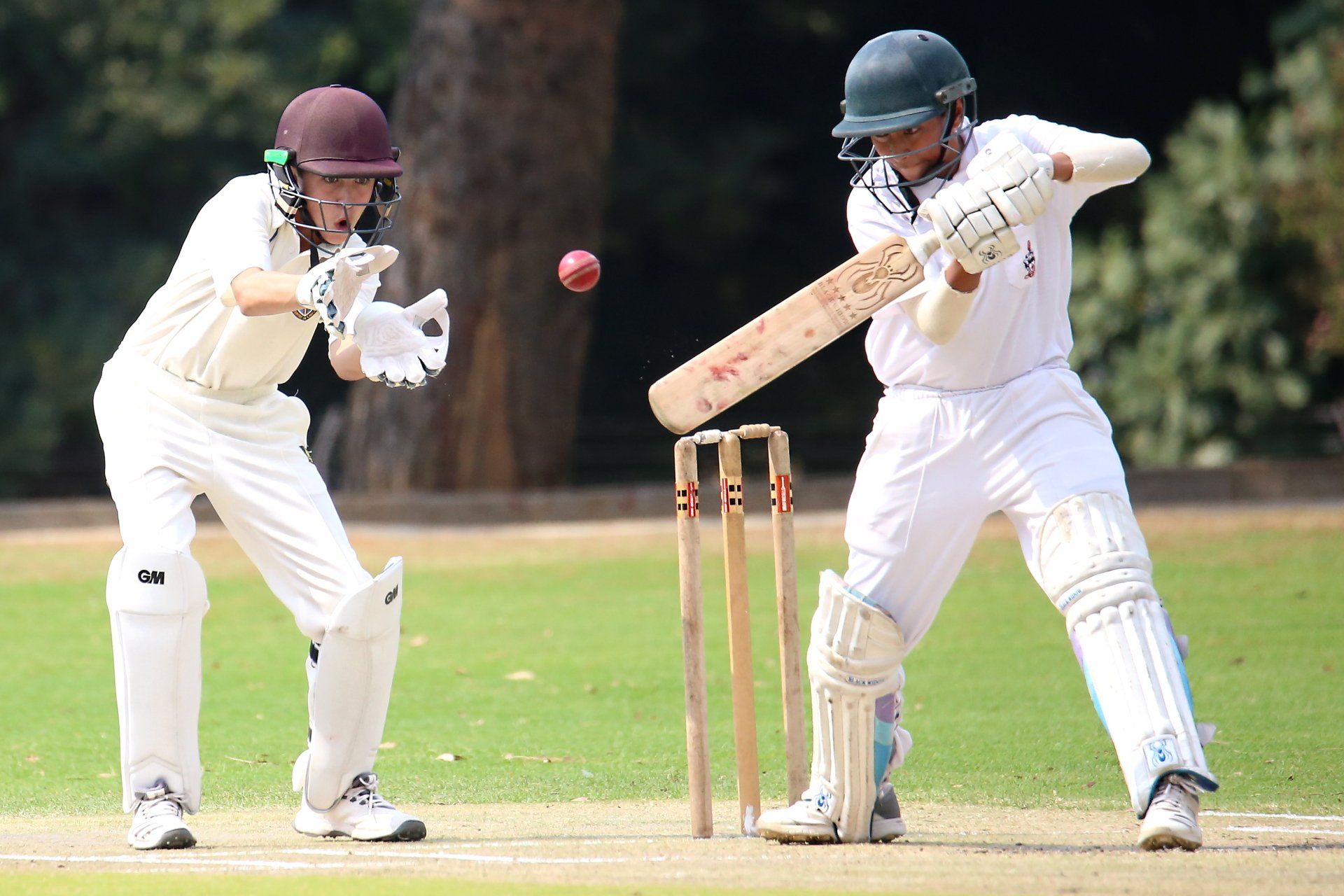
27 October 2022
Sport and social impact communications agency New Reach PR has been appointed by The Ageas Bowl. New Reach PR will support with raising awareness and celebrating The Ageas Bowl’s activities, the success and impact of Hampshire Cricket, as well as its role and responsibility to the community. The agency, founded in 2021, has risen in prominence over the last 18 months and is becoming recognised as a world-leading communications agency specialising in telling powerful stories of sport and purpose. New Reach PR has worked with the likes of Laureus, EFL, BPA, England Squash, London Sport, Commonwealth Games England and many more. Commenting on the announcement, Managing Director of New Reach PR, Nick Rewcastle said: “This marks a significant moment for New Reach as we enter the exciting world of county cricket courtesy of our partnership at The Ageas Bowl. Through working with Hampshire Cricket and Southern Vipers, we are also given the fantastic opportunity to support the broader non-sporting activities at The Ageas Bowl too, vitally demonstrating positive impact. “There are great things happening at The Ageas Bowl, and now marks the time to tell these important stories and demonstrate its commitment to the community, planet and sport.” Harry Walklin, Head of Marketing, Digital and Communications at The Ageas Bowl said: " The appointment of New Reach coincides with an exciting phase here at The Ageas Bowl with the venue’s transformational redevelopment plans looking to further enhance the amenities on offer to the local community. “The Ageas Bowl is an important community asset, and we look forward to working with New Reach to tell that story.”

3 October 2022
Before delving into the purpose of rugby union, we want to wish everyone at, and associated to, both Worcester Warriors and Wasps all the best as they endure a truly challenging time. We hope that the financial situations of both clubs are resolved, and all staff, players and fans return to a safe and secure environment. Now, on with the blog… As the age-old story goes, rugby was created by none other than the legendary William Webb Ellis back in 1823 when he picked up the ball during a game of football and ran with it. It seems so simple, but since then, Rugby Union has become one of the most popular sports in the world. Over the years, the sport has developed into a game of strength, speed, skill, and passion. It also established the values of integrity, passion, solidarity, discipline, and respect, as outlined by World Rugby in 2009. These values have been ever-present throughout the game as rugby has built a reputation for having friendly fans where home and away crowds stand together, strong levels of respect for both playing and refereeing and a culture of inclusivity where everyone can compete no matter what size you are. And while rugby union in many ways has built a great reputation as a game of chivalry and respect, it is also known as a sport for the rich and the elite. In last month’s blog , we explored the purpose of rugby league, and we investigated how the elitism we see today in rugby was ultimately created by the decision to keep rugby an amateur game, barring anyone that couldn’t afford it to play. Even since making the game professional, its connections to private schools and a large concentration of players in the rich south of England, rugby union has struggled to shake off the elitist image it built up so many years ago. With that said, rugby union has come a long way since its amateur days when it comes to inclusivity. Few moments shine greater for the sport than the 1995 Rugby World Cup when an undervalued and dismissed South African side, of mixed race and ability, showed the world the power of inclusion, driven by the great Nelson Mandela. For English rugby fans, Jonny Wilkinson’s drop goal in 2003 will remain etched in memories forever. Those moments of greatness on the pitch have delivered so much off the pitch at all levels of the game. Following the 2003 World Cup, the numbers of young people playing the sport aged seven to 12 rose by 28 per cent over the three years after the tournament in Australia, while among teenagers (aged 13-18) there was a 16 per cent increase. We are the first to say that major events don’t drive participation, but 2003 surely gave it a good shot. Although, the RFU was prepared, the government invested and naturally the sport grew. And now we are seeing new levels of growth, albeit many will rightly argue, later than it should have. Nonetheless, rugby has taken a leading role in the growth of women’s sports in England. The England national team, aka the Red Roses, have made headlines in recent weeks as they are on a 25-game winning streak, the most of any national rugby team - male or female. As they go into the women’s World Cup in two weeks' time, their winning streak is unlikely to end soon and go into the tournament as firm favourites. Whilst the women’s World Cup in New Zealand is gearing up to be a great spectacle, sadly the state of club rugby at home is dire. Worcester Warriors have been placed into administration and suspended from the Premiership after not meeting the RFU’s funding deadline. Wasps have also filed for administration to help with the club's financial situation, after they have struggled with the repayment of a £35 million bond to help with their relocation in 2014. With two clubs falling victim to financial difficulty, it begs to question what went wrong and how this has happened. No doubt thorough investigations will take place, with the RFU and Premiership Rugby behind those, but also being scrutinised at the same time. The devastation that this brings for not only the club, but the community is severe. From players and staff who are out of a job, the club charities that have delivered such good locally and the fans and those around who rely on the love and passion of their club – it’s heartbreaking. Many blame Covid-19 for the financial pressure the sport is facing. But is it fair to just blame the pandemic when many clubs were making a loss before? Numerous club executives and owners have come out to say that premiership rugby business models are flawed and need to be overhauled. Saracens CEO, Lucy Wray, spoke to City AM about how important it is for Premiership Rugby to make changes that prevent more clubs from going down a similar fate as Worcester and Wasps. From a sport that was once known for its elitism and its richness to being on the back pages for its financial difficulty, rugby’s turbulent journey continues. It’s a sport that doesn’t make it easy for itself, but brings so much joy to all when it goes right. Through the highs and lows, fans and players have always remained deeply passionate about the game. It seems that now is the chance for the sport to not only grow the domestic game, but to also rejuvenate the entire structure, from business models to diversity – and perhaps even parity. Priorities have to be to sort the financial mess, of course, but as it does that and emerges from darkness, it’s fundamental that the sport considers its responsibility to diversity and inclusion, focusing on the potential that the women’s game has, ensuring more young people from varying backgrounds and communities engage in some way and we see an even more representative elite playing group on our pitches. For now, we all eagerly await good news from Worcester and Wasps, whilst keenly watching the Red Roses dominate in New Zealand.

16 September 2022
Nick Rewcastle, Managing Director of New Reach PR, ponders in SportsPro whether Patagonia’s lauded decision to commit all future profits towards protecting the planet could mark a shift in the meaning of brand authenticity. Patagonia has ‘given their company to planet Earth’. In layman’s terms, what that means is that the ownership of the company has been transferred to two charitable trusts, allowing profits not required to be reinvested into the running of the business to go directly towards fighting the effect of climate change. The brand claims that “instead of ‘going public’, you could say we’re ‘going purpose’.” It’s fair to say that sacrificing profit to instead give back to the planet is pretty purpose-led. The news spread like wildfire across the US and overnight here in the UK, before we knew it, every daily was running it. It was even the second most read story on BBC News – yes, in the week after The Queen’s death. However, the best thing about this was that it wasn’t a ‘PR activation’ from Patagonia – this is genuine. Patagonia embodies the definition of being a purpose-led business. It actually cares. We can’t ignore the fact that founder Yvon Chouinard (pictured above) is a billionaire, but the authenticity comes from the fact that instead of financial growth, he commits to giving back and to his values. Chouinard has written an open letter detailing the reasons behind this decision. He claims that he never wanted to be a businessman, things escalated and before he knew it, Patagonia was what it was. He never wanted to be a billionaire, and just wants to do good – that ethos has resonated through the brand’s existence. Now, Earth is Patagonia’s ‘only stakeholder’. It’s powerful, and everyone is talking about it. Could we regard this as the most authentic moment in business history? For a few years now, in the rise of the purpose-led movement, and the need for brands to be seen to do good, the definition of authenticity has been scrutinised. Nobody has really come up with the answer. Perhaps unbeknown to Chouinard, we finally have our answer. Is this the big shift that we needed in authentic action?
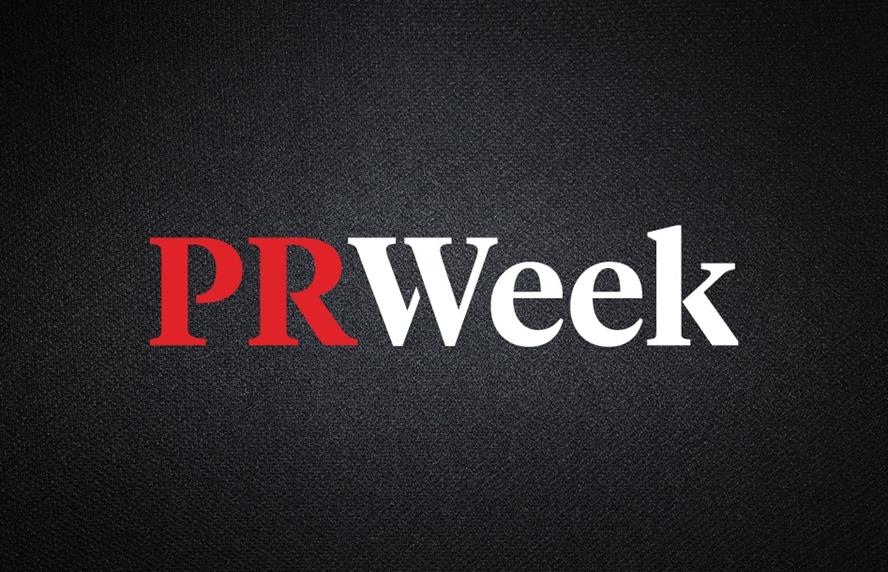
16 September 2022
Our MD, Nick Rewcastle, offered his thoughts on Patagonia and authenticity to PR Week. The full article, dated 16 September 2022, is available here , and below. Patagonia’s only shareholder is now the Earth. The outdoor clothing brand lives and breathes the outdoors, with the planet at the heart of its everyday activity. From its inception, Patagonia has committed itself not only to providing a high-quality product, but also to negating the devastating effects of ecological destruction going on around us. Patagonia was started as an experiment in responsible business. It was founded by craftsman and self-confessed accidental businessman Yvon Chouinard in 1973. In 2002, the company committed to giving away one per cent of its profits to grassroots sustainability and environmental causes. Many would argue that Patagonia is the undisputed world leader in its approach to the planet. Having sustainability at the core of business objectives from the get-go has shaped its PR strategy, moulding its messaging quite differently from pretty much any other brand in the world. There’s not that expected and all too common hard sales narrative, invasive PR campaigns and self-indulgent coverage across owned or earned platforms. The reality is real-life issues highlighted and the brand’s mission clearly narrated as being to resolve them. Consistent messaging over decades has delivered what we are now seeing. No other brand has made such a commitment to any societal crisis. Patagonia has created, through impactful communications, a real sense of brand advocacy for its consumers. Its customers share its journey to ‘save the planet’. Last year, Patagonia changed its marketing messaging around Black Friday, pledging to donate all online and retail profits from the day. The message resonated with the brand’s customer base, with one referring to it as a “fundraiser for the Earth”. Against the backdrop of a general dip in Black Friday revenues across the US, a record $10m was donated to non-profits working to improve sustainability through protecting air, water and soil for future generations. Since 2018, the company’s purpose has been: “We’re in business to save our home planet.” Simply put, without more resources pledged to protect the Earth, there will be no businesses and no brands. Patagonia’s commitment to sustainability was even recognised in last year’s widely publicised and highly regarded Laureus Sport for Good Index . This week, Patagonia announced the transfer of its profits after reinvestment into two charitable trusts. The company could have taken a different path, selling the brand and donating the proceeds, or going public – but this would have led to inevitable pressure for short-term gains from investors. The brand’s approach has always been to get the bills paid and to be a platform for influencing change within its customer and supplier communities. It’s the truest example of authentic purpose-led PR we have ever seen. And it also acts as a call to other brands to consider their approach and commitment. This week’s media coverage, widespread from The New York Times to the second-most-viewed article on BBC News, wasn’t a purely commercial exercise. It was a genuine example of telling the story of how Patagonia plans to use its purpose-first approach to fight climate change – and how others can join it, too.
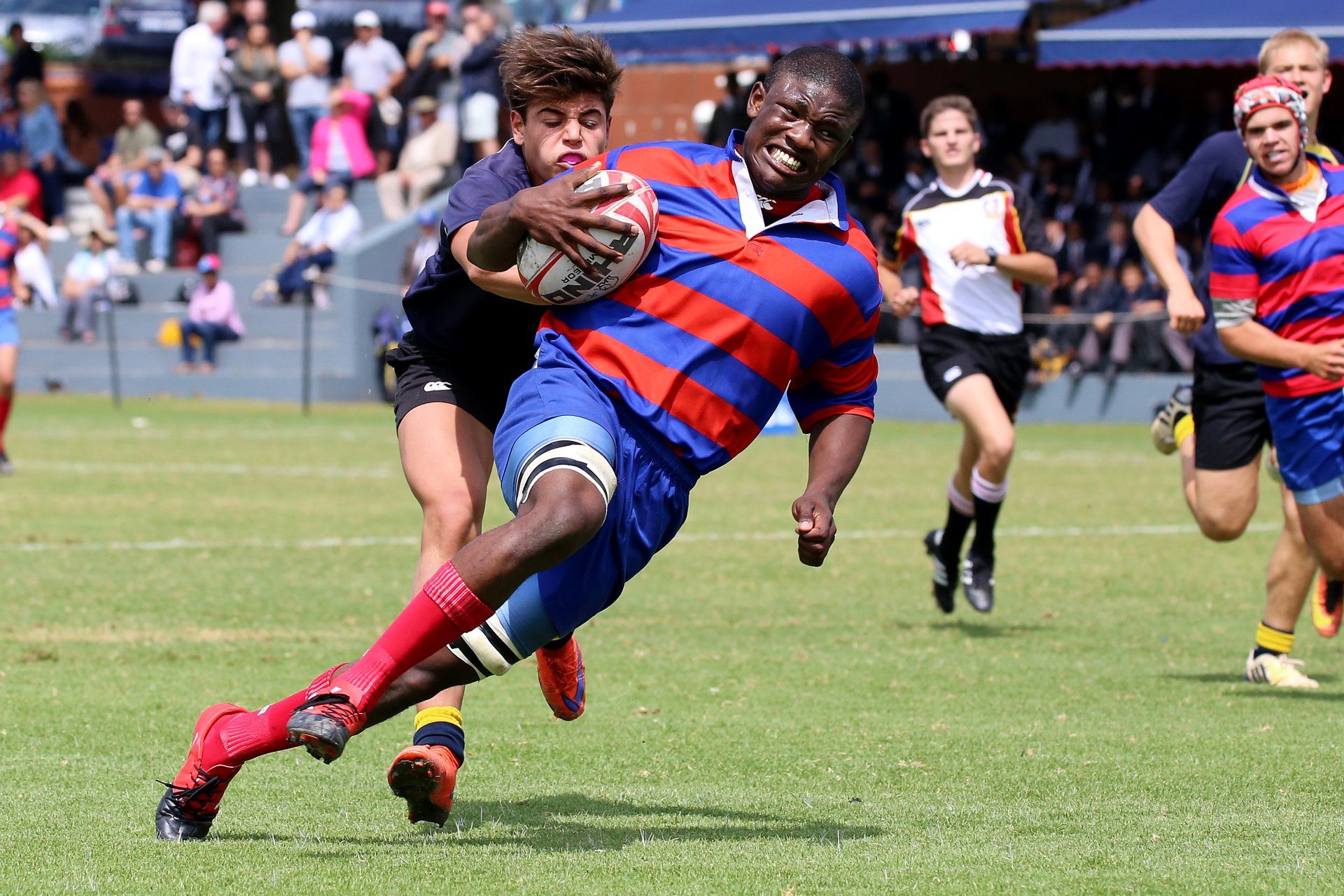
1 September 2022
Rugby League is a sport known for its hard-hitting tackles and brute strength (and according to a certain Secretary of State, a pretty spectacular drop goal…. not!). Throughout the years it has butted heads with the other code, rugby union, but has always maintained its strong inclusive values and been a powerful representation of the industrial working-class towns in the north. Also known as the rugby league heartlands. Rugby league was born out of the necessity for professionalism in the north. Before 1895 rugby was an entirely amateur sport played by the elite, with many richer players wanting to keep it that way to maintain prestige and exclusivity to the sport. However, working-class players only felt it fair they were compensated for their time playing and fought for the game to be professionalised. After a hard battle between the north and south, rugby was ultimately split, and rugby league was created. With rugby league’s professional status, this naturally created some rule changes to make it a more spectator-friendly sport and draw in the crowds. Within League, there are fewer players, smaller scrums, different point scoring, and no rucking. These changes created more of an emphasis on tackles, less end-to-end rugby and gave more value to scoring tries, over kicking. After the tumultuous break-up, rugby union banned all players who supported the league and solidified the class dynamic between the two codes with Union being for the rich ruling class in the south and the other for the working class in the north. Many argue there are remnants of these values still present today, but that’s a much wider debate! Is the north v south divide a bad thing? Commercially, many will say yes – as it limits the growth and reach of the respective sports, with rugby league rarely entertained and welcomed south of the M6, and to an extent, the same the other way around. COVID-19 hit sport hard, with union feeling the impact at club level big time, but league found it even harder. Those poorer working-class towns, with smaller investments and budgets truly felt the pinch. The growth of the game was stunted, but thankfully the recovery continues, and all seemingly survived. Not as much can be said, conversely to union, will the carnage facing Worcester and Wasps currently – and we all hope that things can be turned around and clubs can be saved. Back to league, it’s always struggled to hold significant commercial value and grow its audiences. But what it has done is build a powerful audience and fanbase right at home. Rugby is a culture, a way of life for many. It defines communities, brings people together and offers so much in the heartlands. Everyone wants to play either football or league, club foundations and the RFL are delivering daily on a huge scale in their local communities. The values of rugby are instilled across young people and adults from the tens of thousands that play at grassroots level, to those that turn up to the Halliwell Jones each week with a pie and a pint to cheer on the Wire. Respect plays a fundamental part in rugby league’s code of conduct, instilling positive values. League also remains a game with inclusivity and diversity at its core. After all, the code was created based on the value of inclusivity for all classes. As far back as 1935 and 1937 respectively, Wales and England saw their first black league players and before we knew it the likes of Ellery Hanley and Martin Offiah become heroes in more recent years. In the 1980s women began playing and fast forward to today we have the Women’s Super League attracting record crowds to the sport. That inclusion continues into providing opportunities for those with disabilities, with PDRL (Physical Disability Rugby League) on the rise and Australian comedian Adam Hills not only an ambassador for the sport, but also Warrington’s star man. The countdown is well and truly on for next month, which sees the (belated) start of the Rugby League World Cup. What we will see is the international game returning to England, with the potential to bring a nation together and we might even see a few ‘southerners’ out and about in London to catch the men’s semi-final at The Emirates or the Copperbox where England will be in wheelchair action. Yet there is a sense with this tournament, like we have rarely seen before, that it’s about so much more than the results on the pitch. The tournament is about inclusion, seeing a unity of competition across men's, women's and wheelchair tournaments at the same time. The tournament is an opportunity for rugby league to be showcased to the world, for the world. It is set to be the most inclusive of world cups to date and is a perfect example of the sport’s values. Rugby league is a way of life for communities across the North of England, providing rare access to hard-to-reach groups in some of the most deprived areas of the nation. The potential for this world cup is huge, and credit to Jon Dutton and his team for the work they have done to get us to this stage. Rugby league is a sport with purpose.

4 August 2022
The Commonwealth Games started with a spectacular opening ceremony celebrating the rich history and culture of Birmingham. It showcased the city’s critical role in the industrial revolution, its multicultural atmosphere and celebrated the local musicians. The ceremony brought in all of the Commonwealth’s 72 nations & territories and over 4,000 athletes in front of a crowd of 30,000 people at the Alexander Stadium. Multi-sport events such as the Commonwealth Games are, without a doubt, one of the highlights of the sporting calendar. Whether you like athletics, swimming or gymnastics, there is something for everyone to watch and enjoy. Unlike the Olympics, the Commonwealth Games brings together a new collection of sports that are popular within the Commonwealth countries. Sports such as cricket, squash, netball and lawn bowls have their opportunity to shine. The ‘Friendly Games’, as it is more affectionately known, offers a great sense of camaraderie among teams, supporters and the entire Commonwealth of Nations. Team England’s narrative this year is all about being ‘Part of The Pride’ – and being involved, watching or following an event like this does instil a strong sense of pride in all of us. That pride is somewhat even more heightened for certain nations and territories that don’t often get the chance to compete on the biggest global sporting stages. The Falkland Islands, Gibraltar, Guernsey, Jersey, and the Isle of Man are a small example of those that are enjoying their moment, lapping it up quite rightly and everyone is loving it! We also have the rare opportunity to the Home Nations; England, Ireland, Scotland, and Wales competing separately as well. They go from teammates to rivals for 11 days, test themselves in different ways against new competitors and aim to ‘Bring it home’. But the Games, and multi-sporting events is about much more than just the competition and pride it instils. There are deep-rooted social and political issues that arise, as well as the L-word…legacy. The Games' connection to the Commonwealth is a unique history for a sporting event. Starting in 1930, they were originally called the British Empire Games. However, the tournament has drastically evolved since then. The newly branded Commonwealth Games was created after many countries' connections to the British Empire faded and the Commonwealth as we know it was formed. However, with this history comes a darker side too. The history of the Commonwealth and its connection to colonisation is not one that can be forgotten. Much of this legacy is still very prevalent in many countries competing in the Commonwealth Games. For example, with more than half the countries competing, homosexuality is criminalised. These laws were passed down through colonisation and their existence to this day is proof of the lasting effects. Tom Daley, a powerful voice for equality, delivered the Queen's Baton to the Opening Ceremony surrounded by a parade of LGBTQ+ progress flags carried by citizens of countries that criminalise homosexuality. The Games is using its platform to deliver some of the most pertinent and powerful messages to the world. Speaking of nations, one of the mange issues surrounding the Commonwealth Games, as well as many other events, is around the challenge of finding a host nation. An increasing number of nations are unable to host sporting events due to lack of funding or infrastructure, let alone security and political issues. The 2022 Birmingham Games for example were originally meant to be in Durban. It would have been the first time the Commonwealth Games would have been held in Africa but unfortunately, after not being able to secure their budget, the Games had to go elsewhere. It's a shame really, as there’s clearly a positive impact that hosting tournaments such as the Commonwealth Games can have on nations and cities, let alone the opportunity to make their mark on the global stage. We have to ask, is there more that can be done to allow more countries to have their moment? Right now, we are seeing first-hand how Birmingham is buzzing with the energy of the Commonwealth Games being hosted there and has been an incredible opportunity for them to showcase the history and culture of their great city not only to the rest of the UK but all over the world. Not only have the games been a big boost for tourism but potentially local economies as well. We always talk about legacy around major sporting events. We know that major sporting moments such as London 2012 ten years ago, or even the recent Lionesses win won’t spark a shift in participation and drive huge number of people to sport. The real work needs to happen behind the scenes to capitalise on this moment and create a sustainable future for grassroots sport. But, for now, fair play to Birmingham. The city has seized this moment to spread important messages and are having a blast hosting the Games!
© 2025
All Rights Reserved | New Reach PR Ltd | Company Number: 13324899 | VAT Registered: 390892949
New Reach PR, Unit 53, Newhaven Enterprise Centre, Denton Island, Newhaven, BN9 9BA
Photography courtesy of: Motiv Sports UK, Sport England, England Squash, LYR, Laureus, Hoopsfix, Gentoo Sailing, Levelling the Playing Field, Dave Vokes, Aramis Rugby, Italian Rugby, Accessercise, BMC, Greenhouse Sports, Global Chess League.

